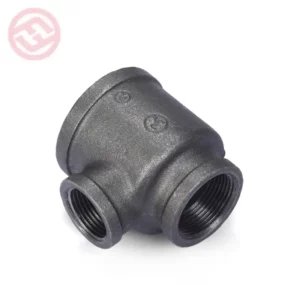American pipe fittings, specifically those conforming to American standards such as ASME (American Society of Mechanical Engineers) or ASTM (American Society for Testing and Materials), come in various standard diameters to match different pipe sizes. These fittings are designed to connect or adapt pipes of specific diameters within a piping system. Common standard diameters for American pipe fittings are based on nominal pipe size (NPS).
Here are some typical standard diameters for American pipe fittings:
- 1/8″ NPS: This fitting typically matches pipes with a nominal inside diameter of approximately 1/8 inch.
- 1/4″ NPS: Designed for pipes with a nominal inside diameter of approximately 1/4 inch.
- 3/8″ NPS: Matches pipes with a nominal inside diameter of approximately 3/8 inch.
- 1/2″ NPS: Designed for pipes with a nominal inside diameter of approximately 1/2 inch.
- 3/4″ NPS: Matches pipes with a nominal inside diameter of approximately 3/4 inch.
- 1″ NPS: Designed for pipes with a nominal inside diameter of approximately 1 inch.
- 1-1/4″ NPS: Matches pipes with a nominal inside diameter of approximately 1-1/4 inches.
- 1-1/2″ NPS: Designed for pipes with a nominal inside diameter of approximately 1-1/2 inches.
- 2″ NPS: Matches pipes with a nominal inside diameter of approximately 2 inches.
- 2-1/2″ NPS: Designed for pipes with a nominal inside diameter of approximately 2-1/2 inches.
- 3″ NPS: Matches pipes with a nominal inside diameter of approximately 3 inches.
- 4″ NPS: Designed for pipes with a nominal inside diameter of approximately 4 inches.
These sizes are based on nominal pipe sizes and are commonly used for various types of American pipe fittings, including elbows, tees, couplings, unions, caps, plugs, reducers, and more. The fittings’ diameters are specifically designed to match the inside diameter of pipes of corresponding nominal sizes to ensure proper fit, alignment, and connection within the piping system.
When selecting American pipe fittings, it’s essential to consider the nominal pipe size (NPS) of the pipes they are intended to connect or adapt, ensuring compatibility between the fittings and the pipes within the system.
What are the typical dimensions for american pipe fittings?
American pipe fittings come in various types, each with its own set of dimensions and specifications to match specific requirements within a piping system. The typical dimensions for American pipe fittings are often based on the nominal pipe size (NPS), the type of fitting, and industry standards such as ASME (American Society of Mechanical Engineers) or ASTM (American Society for Testing and Materials).
Here are some general aspects of typical dimensions for American pipe fittings:
- Nominal Pipe Size (NPS): American pipe fittings are labeled based on nominal pipe size, which indicates the approximate inside diameter of the pipe they connect to. Common NPS sizes include 1/8″, 1/4″, 3/8″, 1/2″, 3/4″, 1″, 1-1/4″, 1-1/2″, 2″, and larger.
- Type of Fittings: American pipe fittings include various types such as elbows, tees, couplings, unions, caps, plugs, reducers, and more. Each type of fitting has specific dimensions based on its design and function within the piping system.
- Thread Specifications: Many American pipe fittings have threaded ends that match the pipe threads for easy installation. Thread standards, american pipe fittings such as National Pipe Thread (NPT) or British Standard Pipe (BSP), define the thread dimensions and type used on fittings.
- Overall Length: The overall length of a fitting refers to the measurement from one end to the other along the centerline. This dimension ensures that the fitting fits within the available space in the piping system.
- Center-to-End Dimensions: Center-to-end dimensions specify the distance from the center of the fitting to one of its ends. This dimension varies based on the type and size of the fitting.
- Wall Thickness: Wall thickness is an essential dimension of fittings and is designed to meet industry standards. It ensures proper strength, durability, and performance within the system.
- Material Specification: American pipe fittings are made from various materials like carbon steel, stainless steel, or alloys. The material specification adheres to industry standards to ensure proper composition and properties.
- Pressure Ratings: Fittings are designed to handle specific pressure ratings, which vary based on the size, material, and type of fitting. Pressure ratings ensure the fitting’s suitability for the intended application.
- Shape and Configuration: Different shapes and configurations of fittings influence their dimensions and usage within the piping system.
Specific dimensions and tolerances may vary between manufacturers, and it’s crucial to refer to the manufacturer’s specifications, technical documentation, or industry standards to ensure the selection of fittings that meet the necessary dimensions, performance criteria, and compatibility within the piping system.
